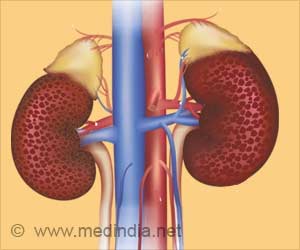Glimepiride, the newest second-generation sulfonylurea, has unique properties that may provide advantages over other currently available insulin secretagogues.
Type 2 diabetes mellitus, a disorder of impaired insulin secretion and insulin resistance, has reached epidemic proportions. The identification of high-risk individuals and lifestyle management can help control diabetes; however, most patients require pharmacologic intervention.
To achieve glycemic control, a stepwise treatment approach has generally been used, beginning with a program of diet and exercise, and to minimize the risk of future micro- and macrovascular complications.Oral agents, with or without insulin, are added when diet and exercise fail to normalize glucose levels. Various pharmacologic agents are available for the management of Type 2 diabetes, including first- and second-generation sulfonylureas (glimepiride, glipizide, and glyburide), biguanides (metformin), á-glucosidase inhibitors (acarbose and miglitol), thiazolidinediones (pioglitazone and rosiglitazone), meglitinide analogues (repaglinide), amino acid D-phenylalanine derivatives (nateglinide), and insulin.
A recent article, presented in vol 18 (6) of Journal of Diabetes and its Complications reviews the role of the sulfonylureas - with a major focus on glimepiride, the newest of the second-generation sulfonylureas - in the medical management of Type 2 diabetes.
The sulfonylureas, the first oral agents introduced for the management of Type 2 diabetes, are effective, well-tolerated, and well-established drugs; Second-generation sulfonylureas are now widely used in the management of Type 2 diabetes. The most recent addition, glimepiride, can be used in combination with metformin, the thiazolidinediones, a-glucosidase inhibitors, and insulin. The unique properties of glimepiride may provide advantages over other currently available insulin secretagogues.
Type 2 diabetes mellitus can lead to serious long-term sequelae, such as blindness, kidney failure, heart disease, neurologic impairment, and stroke. Stringent lifestyle modifications, including diet and exercise, are important measures in diabetes management, but they are often not sufficient to control hepatic glucose output and hyperglycemia.
The author, Stephen N. Davis, stresses that it is important to treat patients to the established target values for blood glucose and A1C to achieve and maintain normal glucose physiology.
Sulfonylureas are effective, well-tolerated drugs that have been used for decades. However, many of the original second-generation sulfonylureas are associated with hypoglycemia and weight gain and thus may not be appropriate for patients prone to hypoglycemia or for those who are overweight or renally impaired.
The investigation of glimepiride, the newest second-generation sulfonylurea, has led to the identification of several properties that may overcome some of these limitations. In addition, glimepiride has been found to effectively reduce PPG and FPG levels and A1C concentrations and has a good safety profile.
Medindia on Diabetes: Diabetes is a group of diseases with one thing in common - a problem with insulin. The problem could be that your body doesn't make any insulin, doesn't make enough insulin or doesn't use insulin properly.











